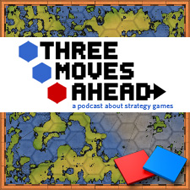Last year, Irrational’s Ken Levine famously said that the problem with most game designers is that they’ve read one book (Lord of the Rings) and seen one movie (Aliens). It was typical Levine exaggeration, but the point was clear – game designers (and, I would add, games journalists) take their entertainment cues from a small menu of experiences and the industry is much poorer for it.
So it’s always great to read one of the three or four most important people in game design history speak about his influences, and, since Will Wright is a child of the sixties, he’s not from the primary Aliens age bracket.
Like many people of that generation, Wright grew up fascinated by the future – Jetsons, Star Trek, 2001, etc. He reveals that many of the concepts in Spore were driven by a viewing of the classic short film The Power of Ten. Showing the mind of a man who has actually thought about these things, Wright notes that both aliens and robots are used to reveal things about humanity.
Beyond drawing from cultural artifacts, Wright compares game playing to model building, which explains the designer’s emphasis on toys and sandboxes over games qua games; I recently went back to play SimEarth and it’s a terrible game, though entertaining as an interactive textbook. Designers who have matured in the world of sophisticated video games will give us much different things than someone who grew up building battleships with glue or playing Avalon Hill wargames.
I’ve written before about the decline of designer’s notes and forewords in game manuals. Even before the current scarcity of manuals, publishers were backing away from this sort of introspection or introductory remark. This sort of discussion is the kind of thing that fits naturally into a foreword or afterword.
You can still get this sort of information on podcasts when developers sit in. “What has influenced you?” is one of those rote journalistic questions that usually typifies laziness on the part of an interviewer, but can lead to some really interesting talk. Of course, you can’t search podcasts (yet) and game historians and archivists of the future might no be able to find this sort of thing. Occasionally you get a great interview with someone who has a real understanding of gaming history, but rarely does the discussion stray to inspirations outside of the business.
So, I want to know more about developers and where they get their inspiration. I’m sure it changes throughout a career, and I suspect that Levine is selling his colleagues short. But as I sat through game demos last week, I was struck by how many games I saw seemed to be inspired solely by other games and usually only other games in that series. (Spore aside, I think only Rise of the Argonauts was actually drawing on things much larger than itself, even if those things were Kevin Sorbo and Lucy Lawless.)
To some extent, wargame developers have easy answers to this question. They like the Civil War or tank combat and therefore make games about them. This only moves the question one degree rearward, though. I think of ProSim’s Pat Proctor, a professional soldier who has been overseas in combat zones, deciding to make realistic and foreboding simulations that have a quiet elegance once you get past the frightful surface. Norm Koger made his name with the expansive Wargame Construction Set series that culminated in Operational Art of War – games that were all about sum totals of weapons and men – but has now turned to bathtub ship combat.
Why do designers make these shifts? What books have they read or things have they seen that affects what types of games they decide to make? Why has Koger embraced 3D technology to make very good naval sims where his contemporary John Tiller has stayed committed to very traditional ways of presenting wargames? (I suspect the answer to that question is rooted in more than learning new skills; The History Channel’s love of 3D battle displays could do more to advance wargaming than anything you’ll see at a con or on this site.)
Yes, I could, as a professional journalist, get these questions answered, but that would only serve me and my few dozen readers. I could write a book about the evolution of strategy and wargames (if anyone knows anything about nonfiction publishing, send me a note) but ultimately the discussion of gaming inspiration should be left to those who are inspired. Blogs, designer notes, Gamasutra essays…there are so many places to get this discussion going. I can’t be the only person who is curious about what has influenced designers, and it’s really a shame that we only really get to hear from the top selling developers or the ones who think that Scarface is a cinematic masterpiece.

